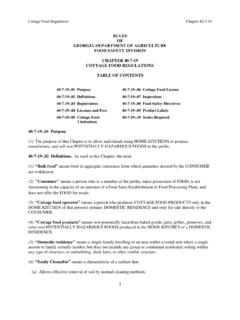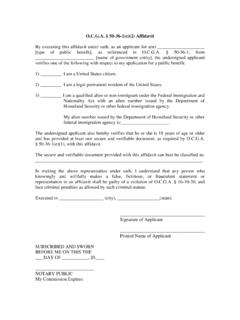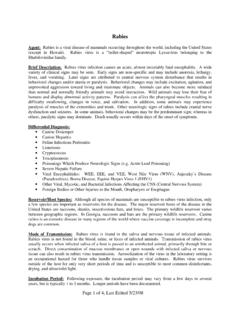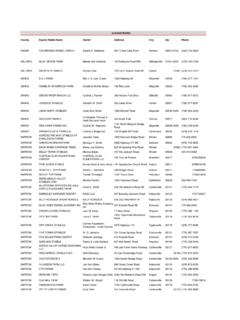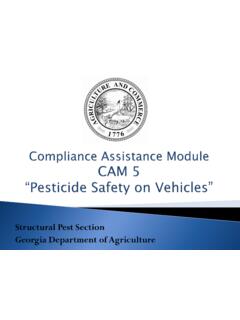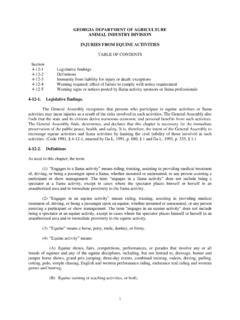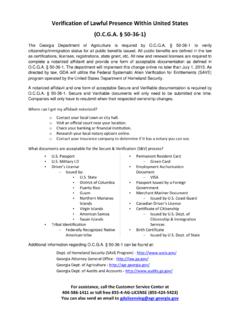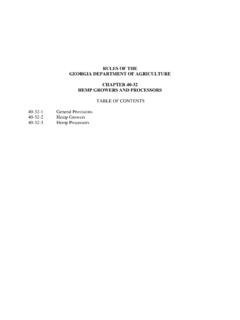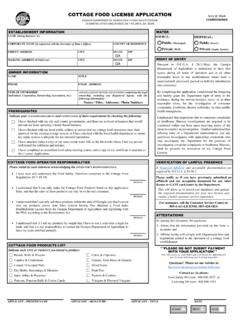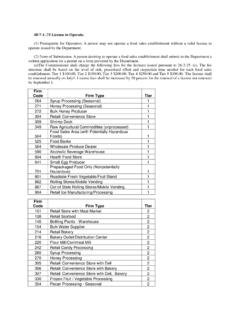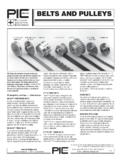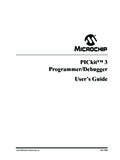Transcription of PERSON IN CHARGE (PIC) QUESTIONS & ANSWERS …
1 GEORGIA DEPARTMENT OF AGRICULTURE FOOD SAFETY DIVISION 19 Martin Luther King Jr. Dr. SW, Room 306 Atlanta, GA 30334 REVISED: 08/12/15 EFFECTIVE: 07/13/04 PERSON IN CHARGE (PIC) QUESTIONS & ANSWERS FOR compliance WITH THE DEMONSTRATION OF KNOWLEDGE (1) Describe the relationship between the prevention of foodborne disease and the personal hygiene of a food employee. Good hygienic practices reduce the risk of food contamination. Practices include: proper handwashing for 20 seconds; avoiding bare hand contact with ready-to-eat foods; not touching ready-to-eat foods after touching raw foods. Clean hands are critical in preventing the spread of diseases. If food handlers fail to properly wash their hands after using the toilet, touching various body parts such as the nose or mouth areas, or after handling raw animal foods, they have the potential to spread harmful bacteria or viruses to the food.
2 Handwashing is equally important after handling garbage, touching hair, or before handling food. Improper handwashing can result in foodborne illness. (2) Explain the responsibility of the PERSON in CHARGE (PIC) for preventing the transmission of foodborne disease by a food employee who has a disease or medical condition that may cause foodborne disease. The employee shall report to the PIC symptoms of diarrhea, vomiting or other acute gastroenteritis, or if he/she has been diagnosed with a foodborne illness disease. The PIC must: o Let the employee know what symptoms and illnesses to report, o Restrict any PERSON from the work place who has diarrhea or vomiting, o Exclude a food employee from working with food, equipment, or utensils if the employee has a bacterial pathogen capable of being transmitted through food such as Norovirus, Hepatitis A virus, Shigella spp.
3 , Shiga toxin-producing Escherichia Coli, Salmonella Typhi, or nontyphoidal Salmonella; and o Properly cover cuts, wounds, or open sores on the hands or arms with a waterproof bandage and single use glove. (3) Describe the symptoms associated with the diseases that are transmissible through food. Common symptoms associated with an acute gastrointestinal illness: o Diarrhea, o Fever, o Vomiting, o Jaundice, or o Sore throat with fever. (4) Explain the significance of the relationship between maintaining the time/temperature control for safety food (TCS Food) and the prevention of foodborne illness. Disease causing bacteria grow best in the temperature danger zone between 41 F and 135 F. The goal is to either keep foods entirely out of this danger zone, or to pass foods through very quickly.
4 When foods pass through quickly, any bacteria present are not allowed an adequate time period to grow. Always remember to keep hot foods hot (135 F or higher) and cold foods cold (41 F or lower). (5) Explain the hazards involved in the consumption of raw or undercooked meat, poultry, eggs, and fish. Raw foods of animal origin may contain different types of harmful bacteria, viruses, or parasites. It is important to cook these foods to safe temperatures, for specific amounts of time, in order to kill these organisms. (6) State the required food temperatures and times for safe cooking of time/temperature control for safety food (TCS Food) including cattle, swine, sheep, goats, poultry, eggs, and fish. 145 F for 15 Seconds 155 F for 15 Seconds 165 F for 15 Seconds Raw Eggs for Immediate Service Fish, Cattle, Swine, Sheep and Goats (Cuts Not Mechanically Tenderized, Injected, Comminuted, or Stuffed) Commercially Raised Game Animals Under a Voluntary Inspection Program Raw Eggs for Hot Holding Ratites Mechanically Tenderized, or Injected Cuts, of Cattle, Swine, Sheep and Goats Comminuted (Chopped, Flaked, Ground or Minced)
5 Cattle, Swine, Sheep, Goats, Fish, or Commercially Raised Game Animals Under a Voluntary Inspection Program Poultry, Baluts and Wild Game Animals Stuffed Fish, Cattle, Swine, Sheep, Goats, Pasta, Ratites and Poultry Stuffing Containing Cattle, Swine, Sheep, Goats, Poultry, or Ratites. Raw Animal Foods Cooked in a Microwave Oven PERSON IN CHARGE (PIC) QUESTIONS & ANSWERS FOR compliance WITH THE DEMONSTRATION OF KNOWLEDGE Page 2 of 5 REVISED: 08/12/15 EFFECTIVE: 07/13/04 (7) State the required temperatures and times for the safe refrigerated storage, hot holding, cooling, and reheating of time/temperature control for safety food (TCS Food). Hold cold foods at 41 F or below. Hold hot foods at 135 F or above.
6 Reheat foods for hot holding to 165 F for at least 15 seconds. Reheat commercially processed food (from a processing plant) to 135 F for hot holding. Store frozen foods in a frozen condition (hard to the touch). Cool properly cooked foods from 135 F to 70 F within 2 hours, and from 135 F to 41 F or less within a total of 6 hours. Cool foods to 41 F within 4 hours if prepared from ingredients at room temperature (such as reconstituted foods and canned tuna). Reheat food in a microwave oven to 165 F. The food should be rotated or stirred, and covered during heating, and allowed to stand covered for 2 minutes after reheating. (8) Describe the relationship between the prevention of foodborne illness and the management and control of the following: (a) Cross Contamination: Harmful microorganisms or substances may be introduced into foods by cross contamination.
7 Examples of cross-contamination include: Contaminating cooked foods with drippings from raw foods; ready to eat foods touching improperly cleaned and sanitized equipment, cutting boards, utensils, thermometers or other insanitary food contact surfaces; failure to wash hands and put on gloves before touching ready to eat foods after handling raw foods, soiled clothing, or other contaminated items. Foodborne illness causing organisms need several hours to adapt to new conditions before rapidly reproducing in the new environment. It is extremely important to properly clean and sanitize room temperature surfaces and utensils every 4 hours, or after their use to prevent contamination. Equipment must also be cleaned and sanitized between working with raw and ready to eat foods.
8 In addition, raw foods must be physically separated from cooked or ready to eat foods in storage or preparation. (b) Hand Contact with Ready-to-Eat Foods: Employees must be very careful not to transfer harmful organisms to ready to eat foods because they will not be cooked again. Hands and fingernails may contaminate the food being prepared. Employees may contaminate food by touching it with their hands, or gloves, after touching their nose or other body parts. Bare hand contact with ready to eat foods is prohibited. Employees must use gloves, tongs, or tissues to handle ready to eat foods. Hands must be thoroughly washed before putting on gloves. (c) Handwashing: Good personal hygiene, including proper and frequent hand washing, is one of the most effective ways to prevent foodborne illness.
9 Any activity that may contaminate the hands, such as using the toilet, handling raw foods, touching contaminated surfaces or equipment, or non-food handling activities such as handling money or sweeping the floor, must be followed by thorough handwashing. Proper handwashing includes the use of handsoap and lathering hands and exposed portions of arms for at least 20 seconds, followed by rinsing with clean water. A nail brush may also be used to clean the fingertips and underneath fingernails. Workers must wash their hand in the toilet room after using the restroom, and then again, when re-entering the food preparation area (d) Maintaining the Food Establishment in a Clean Condition and in Good Repair: Soiled or damaged food contact surfaces provide places for bacteria to hide and optimum conditions for their growth.
10 Good sanitation is necessary to prevent cross contamination from occurring as a result of soiled food equipment. Improperly maintained building areas may provide food and harborage areas for insects and rodents. These conditions can be minimized through proper sanitation. Pest control is a key component of sanitation. (9) Describe foods identified as major food allergens and the symptoms that a major food allergen could cause in a sensitive individual who has an allergic reaction. Major food allergens are milk, eggs, fish (such as bass, flounder, cod, and including crustacean shellfish such as crab, lobster, or shrimp), tree nuts (such as almonds, pecans, or walnuts), wheat, peanuts, and soybeans; or a food ingredient that contains protein derived from one of these above-mentioned foods.
